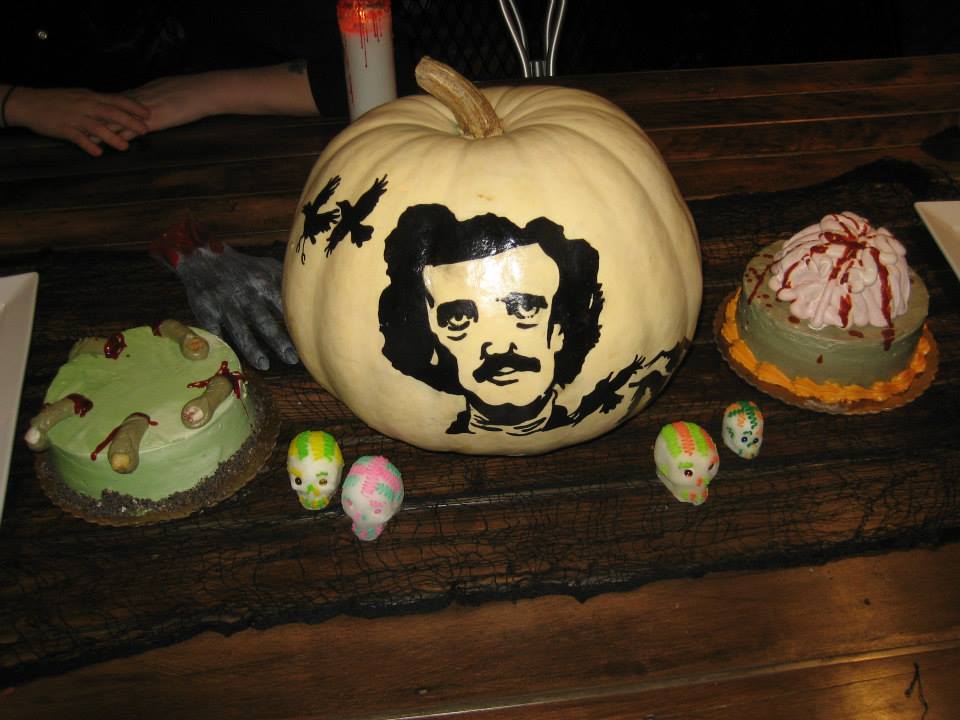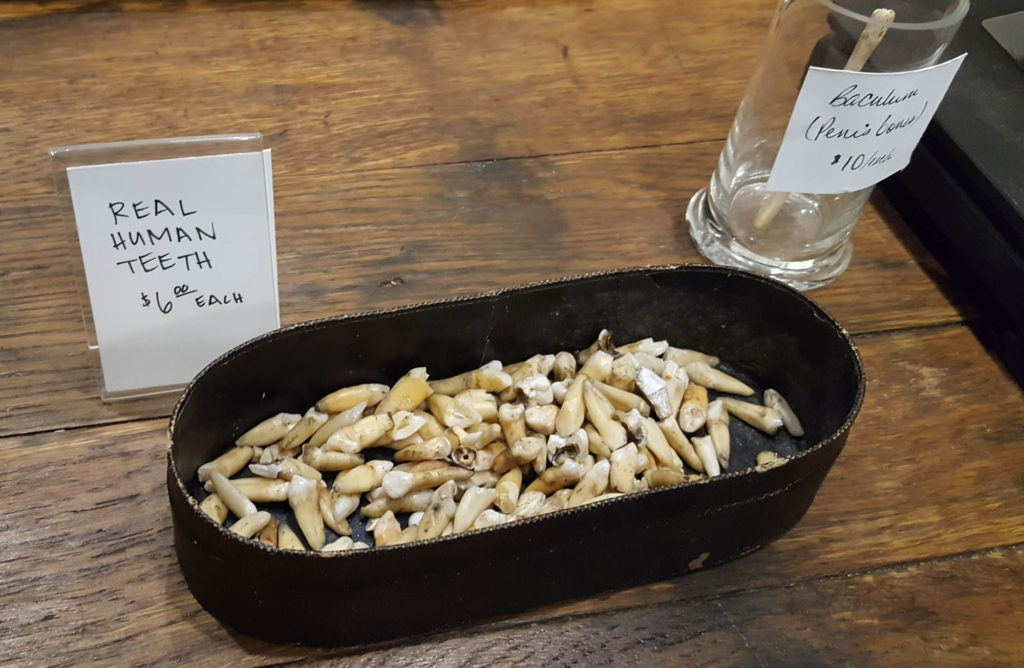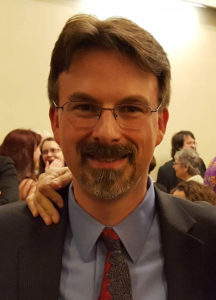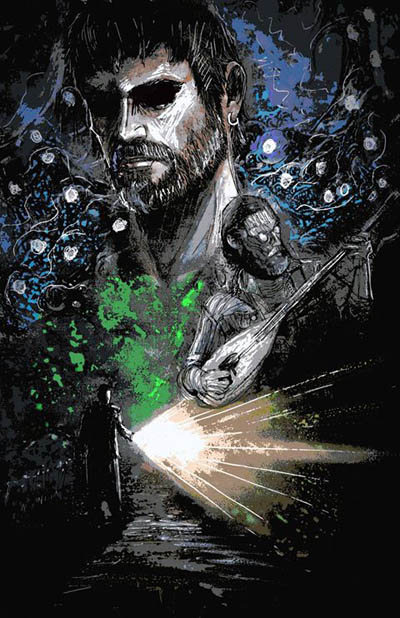“In Loving Memory: Morbid Anatomy Museum” By James Chambers

This year marks the Horror Writers Association New York chapter’s first Halloween without the Morbid Anatomy Museum since we reformed a few years ago—and the dark country of October feels emptier without it.
Located in Gowanus in Brooklyn, the Museum and its board welcomed the HWA and its members for numerous readings, book launches, and other events almost from the day it opened its doors. Thanks to the incredible enthusiasm and generosity of HWA member Tonya Hurley, a Museum founder, Morbid Anatomy provided an early and vital focal point for our chapter. Those who ventured inside the Museum found a wealth of odd and gruesome artifacts, from old bones and sinister medical devices to taxidermy mice in wedding outfits and even loose teeth for sale by the front counter. The Museum bookshop specialized in titles about the obscure, the gruesome, the weird, and, of course, the morbid. And it served as home to a series of unusual events, such as lectures on all things related to death and beauty, how-to taxidermy classes, an annual December Krampus party, and a flea market of the outré that became so popular it sold out days ahead of time.

In October 2014 our chapter held its very first night of readings at the Museum. Featuring nearly 10 members taking the stage to read from their work, plus a horror-themed cake, cookies and other refreshments, the night galvanized our membership. We ran well over our allotted time, which we always tended to do at the Museum, but the night provided an essential spark for our burgeoning chapter, a bonding, a sense of accomplishment. It proved not only that our chapter could pull off such an event but that horror had a home in New York. Night Terrors at the Morbid Anatomy Museum quickly became an annual event anticipated by everyone, an instant, new Halloween tradition.
Each year we refined our presentation and program, and the event grew in recognition and attendance. Attendees gathered in the Museum shop and café on the ground floor for wine and socializing before descending to the wonderfully dark basement for the readings. An intermission gave everyone a chance to refill their cups and grab a few more cookies before the rest of the night’s readings. Book signings followed.

Night Terrors at the Morbid Anatomy Museum garnered a local following. The event frequently popped up in Brooklyn and New York City based event calendars, even in Time Out NY. Horror aficionados in search of something different around Halloween dropped in and enjoyed the readings, the opportunity to meet and chat with some local horror authors—and the book giveaways. As a regular part of our program, authors gave away a book or two to lucky winners who could answer a horror-themed trivia question.
An old standby question, asked at nearly every HWA NY reading: Name four actors who played Dracula on film in the 20th century? It sounds easy, but it often took a couple of tries before someone gave a complete correct answer, and the results could be… interesting. The actors include: Bela Lugosi, John Carradine, Christopher Lee, Jack Palance, Frank Langella, Louis Jordan, George Hamilton, Leslie Nielsen, and Gary Oldman. There are other, less-known actors who qualify, of course, but this was the list we used. More than once someone came up with one of the obscure ones, like Louis Jordan or George Hamilton, but left out Lugosi or Lee entirely. Boris Karloff was a popular choice too.

By our third year, we added HWA Lifetime Achievement recipient Jack Ketchum and Bram Stoker Award winner Lisa Mannetti to our roster and read to a standing room only crowd. Several people who’d been there in 2014 or 2015 returned for 2016. We drank wine, ate creepy treats, and soaked in the ambiance of an oasis the odd.
For three years running, Halloween, HWA NY, and the Morbid Anatomy converged in a deliciously dark tradition, offering entertainment for connoisseurs of the gruesome and frightening, creating a venue for our members to hear each other’s work, and cementing a bond among our chapter members.
Since that first, faltering year when we ran much too late and made up our trivia questions on the fly, our chapter has nearly doubled in size and taken on a regular line-up of events and activities year-round. These include booths at the Brooklyn Book Festival and New York Comic Con, Night Terrors readings at the Lovecraft Bar, Women in Horror Month readings at KGB (an event noted in The New Yorker earlier this year), a summer outdoor reading series in the Oasis Community Garden in Hell’s Kitchen, and even Genrepalooza—a gathering of local authors and editors from the HWA, the Mystery Writers of America, the Romance Writers of America, and the Science Fiction Writers of America. In that same time, our members have accomplished wonderful things. Some have made their first story sales or their first pro sales. Others have found homes for new novels. A few have garnered awards and nominations. One or two performed their first public reading. Many have helped each other to refine and polish our work through critique groups.
Much of that springs from the success of our first readings at the Morbid Anatomy Museum. With no experience, a shoestring plan, and high enthusiasm, we proved that night that our members could work together and that horror most definitely still lived and breathed in New York.

Sadly, the Morbid Anatomy Museum closed its doors at the end of 2016, our last Night Terrors readings among its final events. Funding for such a unique and wonderful—yet unmistakably curious and morbid—place proved hard to come by and public support fell short. Without the Museum, this Halloween feels different. Quieter. Less joyous and mischievous. As if we just learned there is no Santa Claus—or that the Great Pumpkin is never going to rise before us in the pumpkin patch.
Maybe the Museum will rise from the dead someday. Maybe not.
Without its help and support, though, our local chapter very possibly might’ve fallen back into its grave after its first rough year getting off the ground. For now, though, a piece of its spirit most definitely lives on in the HWA NY chapter.
TODAY’S GIVEAWAY: James Chambers is offering one signed hardcover copy of the out-of-print first edition of Warfear: An Collection of Strange War Tales. Comment below or e-mail membership@horror.org with the subject title HH Contest Entry for a chance to win.

James Chambers is the Bram Stoker Award-winning author of the original graphic novel Kolchak the Night Stalker: The Forgotten Lore of Edgar Allan Poe as well as the Lovecraftian novella collection, The Engines of Sacrifice, described in a Publisher’s Weekly starred-review as “…chillingly evocative….” He has also written the story collection Resurrection House and the dark, urban fantasy novella, Three Chords of Chaos. His tales of crime, fantasy, horror, pulp, science fiction, steampunk, and more have appeared in numerous anthologies and magazines, including Allen K’s Inhuman, The Avenger: Roaring Heart of the Crucible, Bare Bone, Chiral Mad 2, Dark Furies, The Dead Walk, Deep Cuts, Gaslight and Grimm, The Green Hornet Chronicles, Hardboiled Cthulhu, Kolchak the Night Stalker: Passages of the Macabre, Shadows Over Main Street, The Side of Good/The Side of Evil, Qualia Nous, Truth or Dare, Walrus Tales, and the award-winning Bad-Ass Faeries and Defending the Future series. He has edited and written numerous comic books including Leonard Nimoy’s Primortals, Gene Roddenberry’s Lost Universe, Isaac Asimov’s I*Bots, the graphic novel adaptation of From Dusk Till Dawn, and the critically acclaimed “The Revenant” in Shadow House. He is a recipient of the 2012 Richard Laymon Award and the 2016 Silver Hammer Award from the Horror Writers Association. His website is www.jameschambersonline.com.

Read an Excerpt from “A Song Left Behind in the Aztakea Hills,” published in Shadows Over Main Street 2, edited by Doug Murano and D. Alexander Ward.
I slid the clipping of his obituary into the same crinkled manila envelope where I kept the handwritten pages he’d pushed through my mail slot the night before he ditched Knicksport and never came back. He had left town in ’64, only five years ago, and I’d always expected to see Jack Kerouac again.
His death from bleeding and booze filled me with a peculiar blend of relief and sadness over open questions whose answers I’d feared to know and now had died with him. All this only two weeks after Gregory dumped me, and that weird grief of losing someone unseen, unheard, unknown for years entwined with my heartbroken loneliness, two venomous snakes nested inside me.
Days passed with the distraction of work. On my easel sat a landscape in progress — the Martinson estate’s eroding cliffs prodding into Cow Harbor, commissioned by Saul Norris for the bank lobby — but my brush faltered upon those dark feelings of isolation and rejection. My hands wandered with my mind. Unwanted textures crept onto my canvas, lending unnatural life to sand, waves, sky, clouds, trees, and rocks as if weaves of ropy fibers writhed beneath the surface of everything. Voids in the composition reflected the absence in my apartment. Several times a day I glanced for Gregory’s lanky silhouette as he brought me coffee only to find myself staring at paint stains on sunlit floorboards. The freshly vacated slot in my toothbrush holder gaped like a hole I could fall through forever. I let my beard grow because the idea of shaving with the straight razor we’d shared, left behind in the medicine cabinet, set my hand trembling, and yet I couldn’t bring myself to buy another.
I could’ve followed Gregory back to the city if he’d wanted that, but I didn’t know if he did, and I didn’t know what else I could give him if all I had to offer had only left him unfulfilled and restless. I’d left Knicksport at age eighteen and stayed away for two decades, but it was my home. My family built the building I lived in before World War I, and I knew the town’s streets, beaches, and secrets with the intimacy of childhood. By leaving, Gregory had rejected the core of me as if what he saw deep inside there repulsed him.
More than painting, drinking numbed the pain of losing Gregory and filled the hollowness left by Jack’s passing. I needed little persuasion to set down my brush, turn a blind eye to Saul’s deadline, and take a break across the street at Raker’s.
Once in a while, devotees of Jack rolled into town, mostly young, naïve, hopeful souls. The poets, the artists, and the songwriters, seeking to walk the same streets the King of the Beats had and breathe the same air as if they might inhale lingering particles of his greatness. Some of those folks knew by word of mouth that if they asked right and tipped well on nights when wind howled down Main Street and the stars wavered oddly in the sky, Spence at Raker’s might talk about the years Jack spent with us. And if Spence sensed a soft touch with a fat, loose wallet, he might even call me down to tell the story of the night Jack, me, and three would-be rock n’ roll stars hiked into the Aztakea hills south of town, which is how I came to meet the mathematician one evening in early November….




It sounds like it was a special place. I’m tempted to quote the Mad Arab.
I wonder how many other appropriate venues lurk in the backyards of other local chapters…
As a new member of the HWA NY Chapter, I am dismayed to find out about these great events I have missed! However, I got in just in time to hear all the great readings at the Summer Dark series at Oasis Community Garden in Manhattan, and I suspect there are more great things in store for the upcoming year.